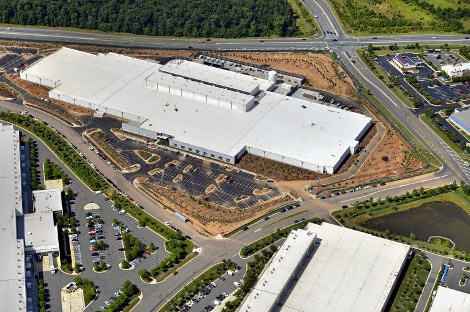How is a Mega Data Center Different from a Massive One?How is a Mega Data Center Different from a Massive One?
Industry think tank proposes standards for data center size and density

What is a mega data center and how is it different from a massive or a large one? What is the difference between a small data center and a mini data center, and what does the expression “high density” really mean?
Everyone has their own meaning for each of those terms, which is a problem, according to the Data Center Institute, an industry think tank that is part of AFCOM. In an attempt to help establish a common language when data center industry professionals around the world talk about size and power density DCI has developed a set of standards it described in a paper published this week.
Disclosure: AFCOM and Data Center Knowledge are both properties of iNET Interactive and as such are sister companies.
“The goal is to have clear communication in the industry,” Tom Roberts, AFCOM chairman and one of the paper’s authors, said. “We’d really like this to become a standard guideline. If somebody says they have a large data center, then you’ll know what that really means.”
When Microsoft says it will build a 1.2 million-square-foot data center on a property in Iowa, you need to answer a few more questions to know what the actual compute capacity at the site will be. When Switch says its data center in Las Vegas can cool up to 1,500W per square foot, or when Digital Realty claims one of its facilities can support up to 15kW per cabinet, the figures, while may be true, are useless without further clarification.
The concept of “size” in data center discussions and reports is sometime defined by power capacity, utility supply, number of racks, building area or the compute room area. Density today also has a variety of meanings. DCI proposes that in data center context, size should only describe size of the compute space, and density should be measured peak kW load.
Size, according to the think tank, is defined using rack yield and area of the compute space. Here are DCI’s size definitions:

If rack yield and compute space in a facility do not match up to be on a single row on the chart, DCI recommends that whatever number is higher be used to determine size.
For density, the paper proposes that measured peak density be used, rather than design or average density commonly used in descriptions. The standard takes into account both rack density and compute space density, the latter defined as measured peak load divided by rack yield.
Here are DCI’s density definitions:

In preparing the paper, DCI has vetted its standards with data center professionals in the U.S. and Asia Pacific, Roberts said. In all, about 100 people have seen the standards and had a chance to comment on them before the paper was published.
The organization is still collecting comments and plans to make revisions to the paper. The final vetting period ends October 22. Send comments to [email protected]
The paper, titled Data Center Standards, is available for download at www.AFCOM.com
About the Author
You May Also Like







